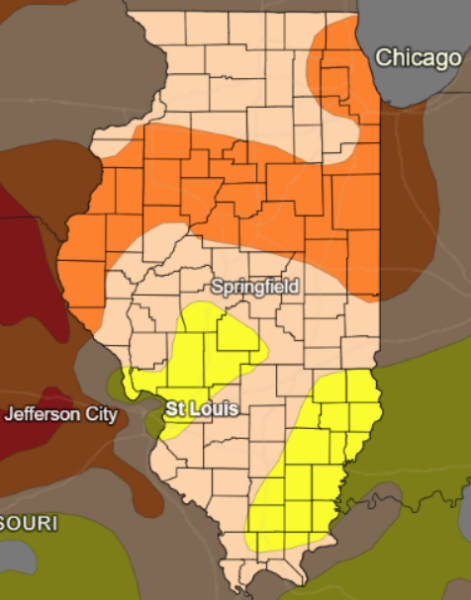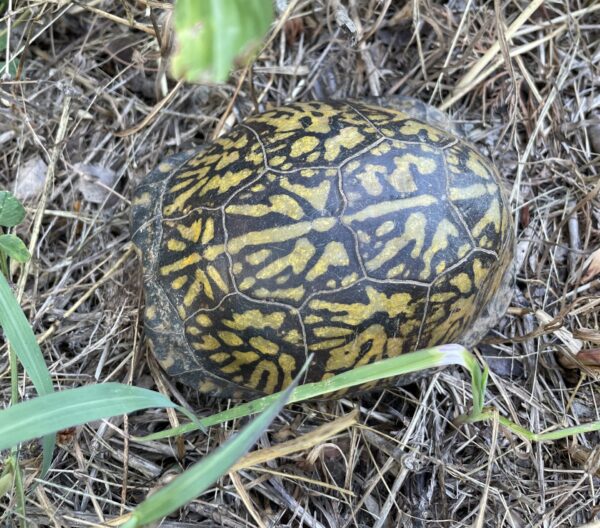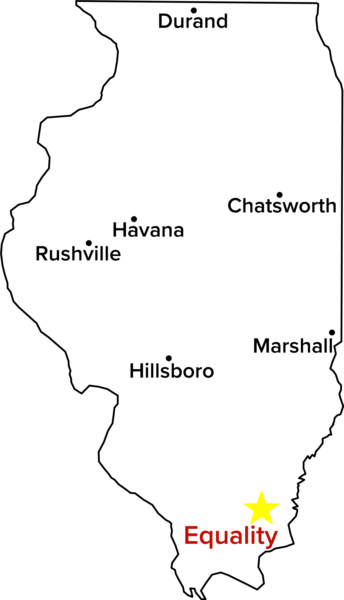A Letter From the Executive Director
June 2023
by Gabrielle Lyon, Executive Director of Illinois Humanities
*Photo of Gabrielle Lyon by Mary Rafferty.
I was born in the Rio Grande Valley of New Mexico. When I was little, I would walk around desert plateaus hued in beige, pink, russet; tall Alamo trees would let go their cotton in the spring and turn radiant yellow in the fall. The crunch of my huaraches against weathered soil, wind-rounded stones, and desert scrub was a familiar sound.
I heard this sound again, unexpectedly, a week or so ago walking through Chicago’s Humboldt Park during our annual all-staff retreat. The grass had turned dry and crisp, and the ground was parched. Historically Illinois has what’s called a “humid continental climate:” hot, wet, and humid in the summer and cool to cold winters. But until a torrent last week, Chicago hasn’t gotten rain regularly in a long, long, time.

In Northern and Central Illinois, it’s being called a “flash drought.” 99% of Illinois is currently dry or in drought. Severely dry conditions are expanding throughout the state, decimating home gardens and causing acute concern for farmers. Rivers and streams are running low and, in turn, stressing riparian ecosystems.
Our state’s historical societies, local papers, and museums preserve gateways through time onto previous droughts. A project undertaken by the Historical Society of Quincy and Adams County, for example, captured and preserved personal memories of the 1934 drought, which arrived while people were still in the throes of the effects of the Great Depression. In other counties, culture keepers preserve documentation of the Civilian Conservation Corps, which recruited 5,581 Illinoisians to undertake emergency water conservation efforts, including by creating the Lake Springfield reservoir. The effort created a source of fresh water for the city and (for the anglers among us) became a prime fishing destination. A scant two decades later, the 1950s drought in Central Illinois caused the waters of Lake Springfield to ebb so greatly that historical artifacts – some now in the Illinois State Museum – were revealed, including a cash register, “burglar’s loot,” and even a forgotten portion of Route 66.
There’s still time for rain to shift the agricultural situation this summer, but it was still notably dry last week in Equality, Illinois, where our team partnered with Mark and Nadine York and the Gallatin County Tourism Committee to install the Spark! Places of Innovation, exhibit on its first stop of a statewide tour. The national exhibit, created by the Smithsonian Institution, features seven Illinois towns: Equality (Gallatin County), Hillsboro (Montgomery County), Chatsworth (Livingston County), Rushville (Schuyler County), Marshall (Clark County), Atlanta (Logan County), and Fairbury (Livingston County). The tour will visit five of the Illinois communities featured in Spark! (Equality, Hillsboro, Chatsworth, Rushville, Marshall), as well as Durand (Winnebago County) and Havana (Mason County).

Museum on Mainstreet is a partnership between Illinois Humanities and the Smithsonian that enables us to bring traveling exhibitions to communities with populations of fewer than 10,000. It gives residents and visitors a chance to experience a taste of the Smithsonian right here at home. But my favorite part of the program is what the host sites contribute: every tour stop showcases a town’s stories, artifacts, events, and history. These locally sourced components give us insight into people and places that have not only weathered droughts and floods, but have also served as sources of community, creativity, and connection.
One thing that isn’t drying up are the dynamic innovations underway in Illinois’ rural communities. The same kinds of small towns that produced ideas like John Deere’s “self-scouring” steel plow, and barbed wire to corral livestock and crops, are generating innovative ways use the humanities to come together, be resourceful, resilient and creative.
I encourage you to visit Spark!. If you visit while it’s in Equality, catch a bite at the Red Onion, peruse the art (and maybe buy some to take home) at ART PLACE/EQUALITY – or leave people behind altogether and hike in our glorious Shawnee State Forest. And, if you miss Equality, join us in Hillsboro in July.

In the meantime, water your gardens judiciously, stay hydrated and hope for rain.
About Illinois Humanities
Illinois Humanities, the Illinois affiliate of the National Endowment for the Humanities, is a statewide nonprofit organization that activates the humanities through free public programs, grants, and educational opportunities that foster reflection, spark conversation, build community and strengthen civic engagement. We provide free, high-quality humanities experiences throughout Illinois, particularly for communities of color, individuals living on low incomes, counties and towns in rural areas, small arts and cultural organizations, and communities highly impacted by mass incarceration. Founded in 1974, Illinois Humanities is supported by state, federal, and private funds.
Learn more at ilhumanities.org and on Facebook, Twitter, Instagram, and LinkedIn @ILHumanities.
Featured Image: Illinois Humanities staff during the 2023 Staff Retreat at the National Museum of Puerto Rican Arts & Culture

